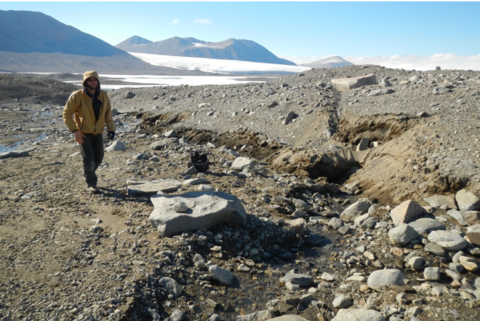
The Permafrost Degradation Experiment (PDE) is designed to quantify the changes in stream and riparian communities and processes when permafrost degradation along streambanks causes significant input of sediment to streams (Gooseff et al., 2016; Sudman et al., 2015). The streams of the MDVs are generally stable in their morphology, many having deeply incised channels that are rarely wetted completely from side to side. Recent observations of stream-side thermokarst development indicates that many cubic meters of sediment can be deposited into streams very quickly (days) (Fig. 1). This input is unlike the changes that we have observed in high flow years when the channel morphology evolves, but not as drastically. Sediment input may scour (with high flows) benthic algal mats, or bury them (low to moderate flows), potentially fueling organic matter for subsurface processes. Our goal in this experiment is to examine how the hydrology and sediment communities of stream corridors respond to these disturbances.
The PDE is scheduled to begin in Jan 2020, with excavation of 10-20 cubic meters of stream bank sediment in a channel that is parallel to the Relict Channel in the Lake Fryxell Basin. We are currently awaiting environmental review to initiate this experiment.
